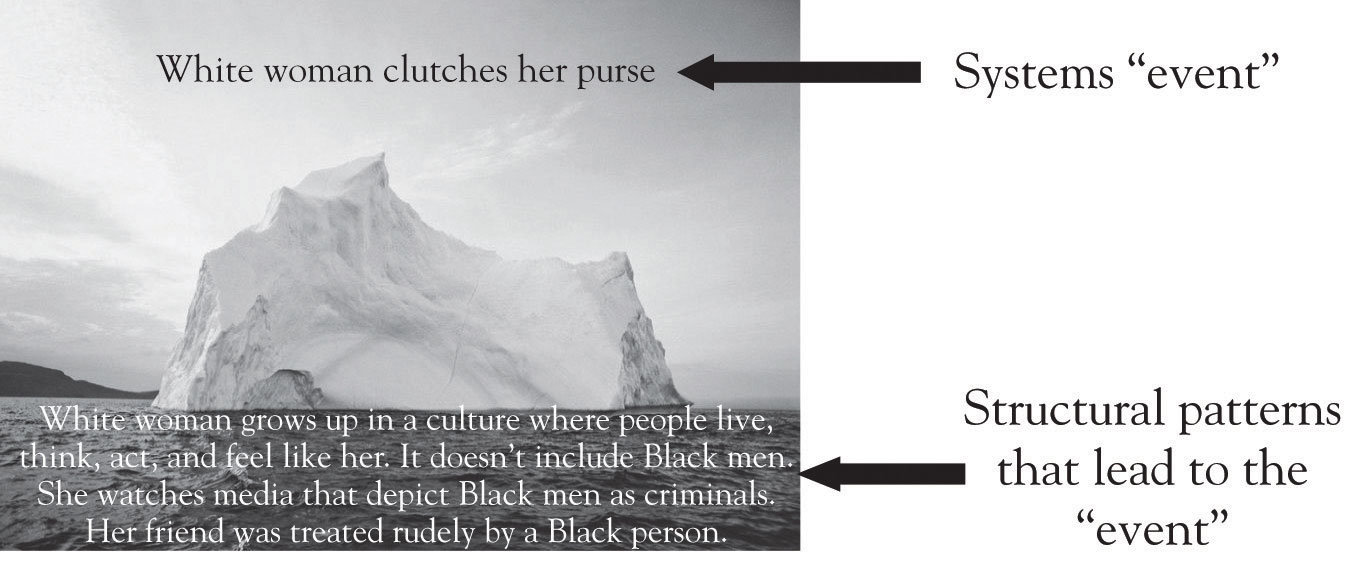In systems theory, systems are interrelated, interconnected parts that create a whole. There are patterns of behavior, deeply rooted structural systems, which are beneath the waterline. What we see at the top of the iceberg are the behaviors; we do not see what contributes to those behaviors. Consider, for example, a white woman walking down a quiet street. She quickly clutches her handbag closer to her body as she passes a black man. Then, when she spots a white man walking toward her, she loosens her hold on the purse.
To address the system, one must be able to address the underlining patterns. These patterns, because they are deeply embedded in the system, will take up significant effort, time, and resources. Changes to the system are slow and gradual; visible changes may not appear until months, or even years, later.
Because most leaders spend their time evaluating and finding solutions to an “event,” they revisit the issues over and over again, with no positive and sustainable results. The following case study illustrates the systemic nature of culture:
Figure 2.3 Culture from a Systems Approach

Langley, Knox, and Cooper, a law firm in the Midwest, knows that it has to do more to be inclusive to women attorneys. It has met challenges in retaining its female work force. The majority of women hired to work at the firm leave within a three year period. To address the issue, the firm provides gender sensitivity training to the entire company, attends graduate career fairs to actively recruit female attorneys, and has quotas for promoting women. However, the efforts in the past five years have yielded little results.
Langley, Knox, and Cooper focus much of their attention on the “events” of the system: women leaving after three years or providing gender sensitivity training. A look at the structural patterns reveals a more complex issue that cannot be solved through training and career fairs. The structural pattern is an insidious belief that women enter the law profession with the same opportunities and access to practicing law as men in the firm. Underlining this belief are more patterns of thought that keep this structural pattern in place. Possible patterns of thought could be:
Figure 2.4 A Systems Approach to Find Structural Patterns in Gender Conflicts

Understanding the thoughts help leaders to recognize that yearly gender sensitivity training would never work. These thought patterns, when combined and supported (intentionally or not), are difficult to unravel. The systemic nature of the problem becomes more complex and chaotic as time goes by and the issues are not addressed.